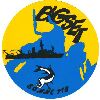Click on thumbnails to see the pictures in full size.
Cruise |
Explanation |
Thumbnail |
| Sonne cruise 1996 | The FS SONNE in the harbor of Maskat, Oman. | 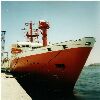 |
| Sonne cruise 1996 | Also the FS SONNE in the harbor of Maskat, Oman, but now fron the other side of the bight. | 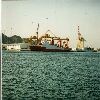 |
| Sonne cruise 1996 | Preparation before the cruise starts. This is on of the GEOMAR cooling and laboratory container. | 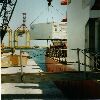 |
| Sonne cruise 1996 | Here is the cooling and laboratory container shown on the deck, nearely on it's final position. | 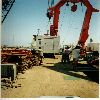 |
| Sonne cruise 1996 | On sea, preparation of the GERMAR lander system. The lander is an autonomous system that can make measurements of the sediments, in depth up to 5000m for periods of a few hours up to weeks. This one here is not yet prepared with the measurement equipment. |  |
| Sonne cruise 1996 | Deployment of a sediment trap. | 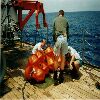 |
| Sonne cruise 1996 | This is the CTD. I was responsible for during this cruise. The CTD is in the middle of this constuction, around the water sampler bottles can be seen. | 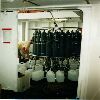 |
| Sonne cruise 1996 | The preparation of the bottom water sampler (BWS) also takes a lot of time. This BWS can collect water a few cm above the sediment. | 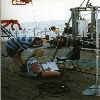 |
| Sonne cruise 1996 | This yellow tube is an ADCP, that can measure currents in the water column using the doppler shift effect. Unfortunately this ADCP has been constructed for shallow water but the company told us it will also work in deep water - not it did not! | 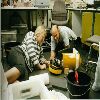 |
